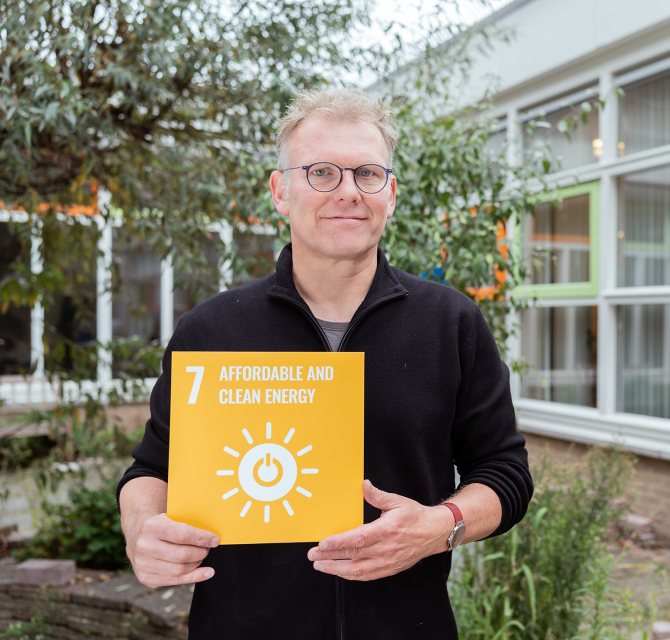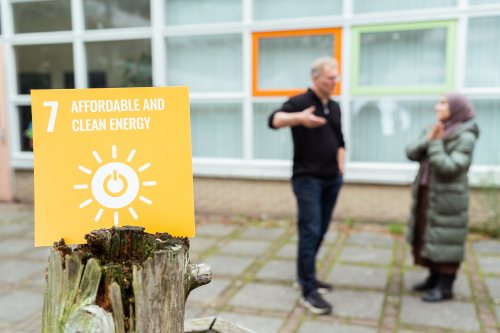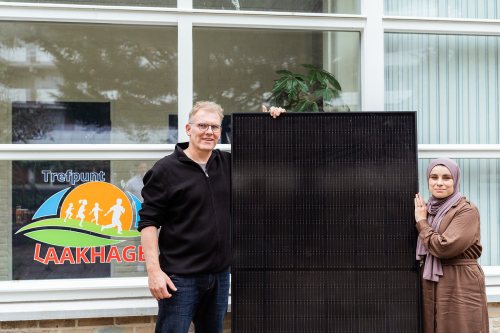
Organizing sustainability improvements based on citizens’ power
29 November 2022
“If you want inhabitants of The Hague to make their homes and lifestyles more sustainable, you must first put yourself in their shoes”, Joris Wijsmuller states, director of Duurzaam Den Haag (translated: Sustainable The Hague) since July 1st. He considers the focus on citizen participation one of the most important successes of this organization. “You cannot force residents to become more sustainable.”, he continues. “You have to understand what’s going on in their lives and support them in taking action of their own in a way that works for them.
Bewoners begrijpen
Duurzaam Den Haag heeft in haar ruim 10-jarige bestaan zich ontwikkeld tot een stevige partner voor de gemeente, projectontwikkelaars en bewoners. De ‘buitenboordmotor’ van de gemeente op gebied van bewonersparticipatie en duurzaamheid, noemt Joris die rol. Een van de belangrijkste successen van de organisatie vindt Joris de focus op burgerparticipatie. “Je kan bewoners niet dwingen om te verduurzamen.” vervolgt hij. “Je moet begrijpen wat bij hen speelt en hen ondersteunen om zelf actie te ondernemen op een manier die bij hen past." Mensen hebben vaak veel urgentere problemen dan duurzaamheid die hun aandacht opeisen. Je ziet dan dat je ook met armoede (SDG 1) en welzijn (SDG3) te maken hebt. Dit moet eerst aangepakt worden om duurzaamheid bij deze mensen op de radar te krijgen.” aldus Joris.
Citizen participation as accelerator
Molenwijk holds the ambition to completely eliminate the use of gas. The teams of Duurzaam Den Haag and Energierijk Molenwijk (translated: Energetic Molenwijk) therefore still have a ways to go. Creating a support base and increasing collectivity are still crucial in this endeavour. Other focus districts are Koningsplein and surroundings, Laak central, Spoorwijk and Moerwijk. “In the context of my previous point about standing in citizens’ shoes, and the interconnectedness of the SDGs, I’d like to mention the project ‘Schimmel Schoon Genoeg’.” , Joris says. “I mention this because we noticed that moisture and mold are a big problem in Moerwijk that affects many people. People aren’t quickly willing to invest in insulation, solar panels, or a heat pump if all their attention is being claimed by combating mold. That’s why we’ve offered support in setting up project ‘Schimmel Schoon Genoeg’. Even though mold is outside of our field of focus, this project does pave the way for us to work on improving sustainability with residents.”, he continues.
The approach in neighborhoods such as Molenwijk and Moerwijk Joris sees as a good example of citizens actively thinking and planning along with the municipality, as well as an example of the support base that enables acceleration in improving neighborhood sustainability. “It’s incredibly powerful what happens when you let civilians take the wheel. Together, they prove to have an amazing amount of knowledge and valuable networks. It’s a shame it’s utilized so little.”, Joris says. The Netherlands stands for a great task of energy transition, with numerous neighborhoods such as Molenwijk that need to become more sustainable. The acquired experience in this example can be very valuable to projects in different neighborhoods and cities.
"Als we onze stad willen verduurzamen betekent dat dat álle inwoners mee moeten (kunnen) doen. Dus ook inwoners met een kleine portemonnee die in een sociale huurwoning wonen."

Buurthuis met zonnepanelen
Als belangrijk succesverhaal noemt Joris de ontwikkelingen in Molenwijk. Samen met bewoners is Duurzaam Den Haag een buurtoverleg gestart en dat wordt nu in de volksmond het ‘spekkoekoverleg’ genoemd. "Tijdens de gesprekken werd duidelijk wat er in de buurt speelde, en samen brachten we de mogelijkheden voor verduurzaming in kaart. Vanuit die inventarisatie zijn steeds meer activiteiten ontstaan, zoals een duurzaamheidsquiz, een regentonnenactie en workshops over koken op inductie." vertelt Joris. De groeiende betrokkenheid heeft geleid tot het verduurzamen van het lokale buurthuis Trefpunt Laakhage. Na de installatie van een warmteplafond zijn er zonnepanelen geplaatst, zowel voor het energieverbruik van het buurthuis als voor de energiecoöperatie. Buurtbewoners konden via het Op Rozen Model mede-eigenaar worden van deze coöperatie. Zo krijgen ook mensen zonder (geschikt) dak of met een klein budget de kans om mee te profiteren van zonne-energie. Met een eenmalige investering van €25 ontvangen deelnemers 15 jaar lang elk jaar €25 als rendement. Op deze manier wordt duurzame energie toegankelijk én aantrekkelijk voor iedereen in de buurt.
"Het is echt ontzettend krachtig wat er gebeurt als je burgers aan het stuur zet. Ze blijken samen ontzettend veel kennis en waardevolle netwerken te hebben. Het is zo zonde dat dat zo weinig wordt benut.”

Een grote opgave
Nederland staat voor een geweldige transitieopgave, met talrijke wijken zoals Molenwijk die moeten verduurzamen. Andere focuswijken in Den Haag zijn Omgeving Koningsplein, Laak centraal, Spoorwijk en Moerwijk. Voor Molenwijk geldt de ambitie om volledig van het gas af te gaan. De teams van Duurzaam Den Haag en Energierijk Molenwijk hebben dus nog een flinke weg te gaan. De aanpak in wijken als Molenwijk en Moerwijk ziet Joris als een goed voorbeeld waar burgers actief mee denken en plannen maken. Én waar dat draagvlak ervoor zorgt dat steeds meer versnelling mogelijk wordt in de verduurzaming van de wijk. Draagvlak creëren en de collectiviteit vergroten is daarom nog steeds belangrijk. De opgedane ervaring in dit voorbeeld kan erg waardevol zijn voor projecten in andere wijken en steden.
The role of the government
Joris also sees the challenges in the execution of the energy transition: “What we are faced with is that governmental authorities have come to work more and more according to systems. Regardless of good intentions and ambitions of individual government officials, we notice that bottom-up initiatives often don’t connect with that system-world. All the while support by the municipality is necessary to realize citizen initiatives. To truly carry out a shift to a sustainable city on time, the municipality should step out of its ivory tower more often to look at all that’s going on in this beautiful green city!”
Wil je meer weten?

Jouw partner in duurzaam doen
We ondersteunen en verbinden bewoners van Den Haag, die hun huis of omgeving willen verduurzamen. Doe je mee?